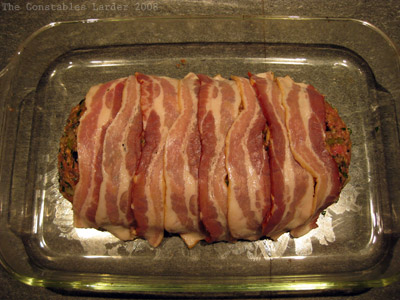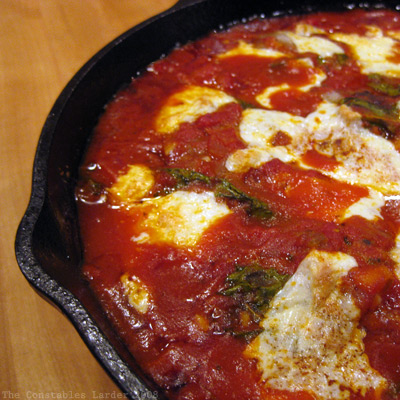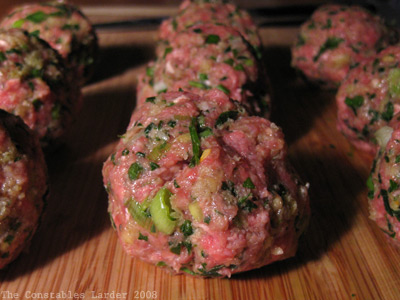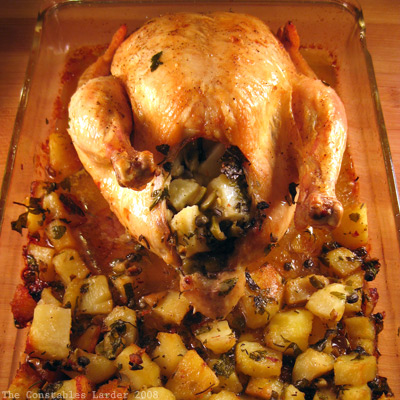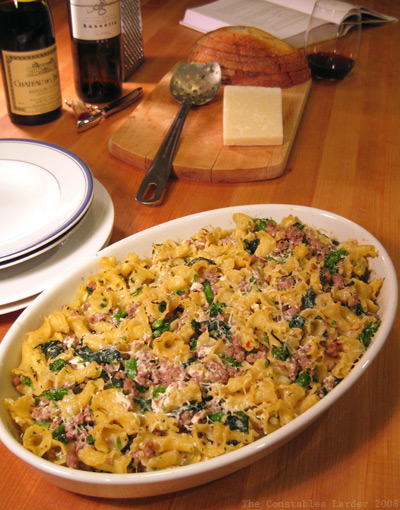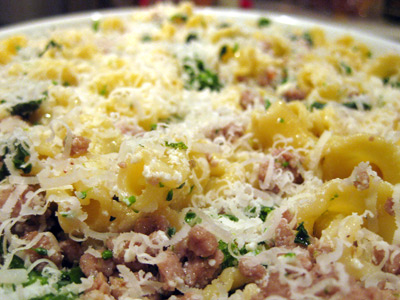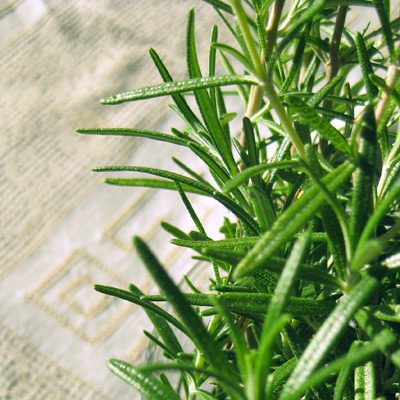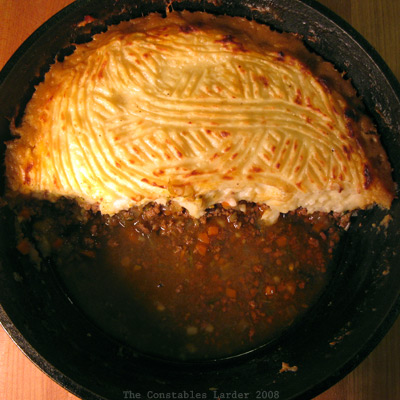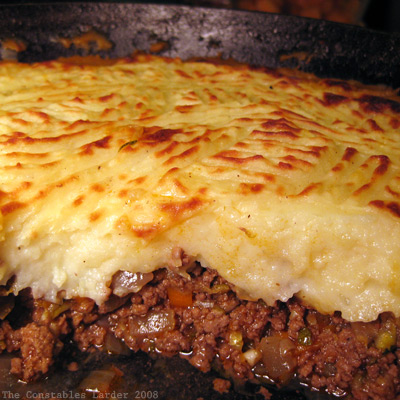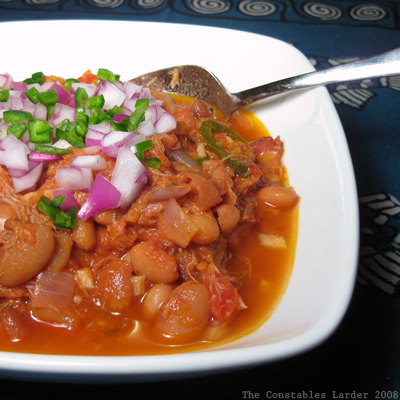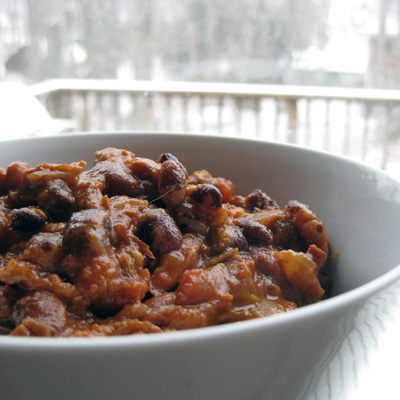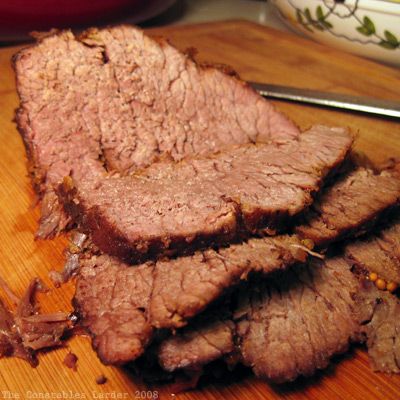
Yesterday I decided to do another braise, and since so many of my creations lately have been tomato-based, I decided to riff off of the spice rub from a recent recipe from Sass & Veracity, her Beef Chuck with Vegetables in Red Wine. I used a dark beer and had a few other alterations, but the direction definitely came from Kelly.
But first I wanted to touch on an interesting discussion that Kelly kicked off a few days later that was focused on food photography/blogging and revolving around “food photo snobbery”. You should read her blog and the comments it elicited, but to pull a few lines, Kelly wrote: “The problems begin when a judgment is made about the quality of the dish by looking at the photo alone. If this is all about photos, then why post a recipe.” She also noted to me “
I can’t resist going big picture for a second. This notion of quality is a recurring one in this era of online creation. When blogging first gained traction, there were (and are) debates over writing quality. YouTube, Flickr, and Second Life — wherever there is “user generated content” — all spur discussions of good versus ugly.
I love this video by Ze Frank (Internet artist/philosopher for lack of a better description), where he’s riffing on “ugly” MySpace pages, and how the lowered cost of creation tools is opening up design to everyone, which is a very cool thing. (Ze is a trip of non-stop ideas — I once shared a taxi with him on the way to a conference and thought my head would explode, but in a good way).
When it comes to food blogs, I appreciate authors who put effort into their pictures (and I count Kelly as one of those). Food photography is damned hard. I’m fighting with it constantly, especially since I do not use fancy equipment of any kind. I like a blog post that shares not just via words and measurements, but through images as well. I’ve probably driven half of you away by this point with all this text and just one picture so far! But I sally on! My personal preference leans towards more natural photos, just as my food preferences lean towards “peasant food” rather than foams and haute cuisine.
Photography is an art form, and as such quality is a subjective thing. Everyone should have confidence in their own subjective tastes, and ignore self-appointed critics. Look to improve, but not to be something you are not! Robert Henri, an influential early-20th-century American painter (he led the Ash Can School / Group of 8), nailed it when he said of art: “The man who has honesty, integrity, the love of inquiry, the desire to see beyond, is ready to appreciate good art. He needs no one to give him an art education; he is already qualified.” (I should note that the Group of 8 got hammered by the art establishment of the time, so it’s no surprise that Henri was saying “stuff your pedigree!”)
Now, speaking of un-fancy photos, on to the pot roast, I mean braise, I mean whatever the heck it is! This one spent part of the time in the oven, and then was booted to the top of the stove to make room for Lisl’s loaf of bread. If it is both a braise and a pot roast, that make it a broast?
And for the record, I find that it is very hard to take pretty photos of braises once plated. I tried for this meal and they were so damn boring, I left them off.
Beef Pot Roast in Beer
2 lb beef chuck roast
2 tsp coarse sea salt
2 tsp peppercorns
1 tsp mustard seed
1 tsp sweet paprika
1 tsp smoked paprika
1 tsp dried oregano
1 tsp brown sugar
6 slices smoked bacon, sliced into 1/2 inch pieces
base of a bunch of celery stalks
1 dark beer (I used a stout)
1 cup of water
2 large onions, loosely chopped
2 bay leaves
4 cloves of garlic, peeled
4 large carrots, peeled
Handful of medium red potatoes, peeled
Preheat oven to 350F. In a mortar, grind up your mustard seeds and black pepper, then mix in the other spices (salt, paprika, oregano, brown sugar). Rub the mix all over your roast.

In a dutch oven on the stove top, cook the bacon until almost crispy, then remove. Sear the roast on both sides and remove, and deglaze the pot with the beer and water.
Add the roast back in, and sprinkle the bacon and onions around. I also chopped the “foot” off of some stalks of celery to add flavor, and tossed in an extra celery stalk, 4 cloves of garlic, and a couple bay leaves.

Let this cook for 20-30 minutes at 350F, then lower to 290F. At the hour mark, flip the roast. Let this cook for another 2 to 3 hours, flipping the roast once more, then basting it every 40 to 60 minutes or so. Keep an eye that the liquid doesn’t get too low, and add some stock or water if it does (with the heat set this low, I did not have to add more). Add the carrots and potatoes with about 1 1/2 hours left and turn them about halfway through.
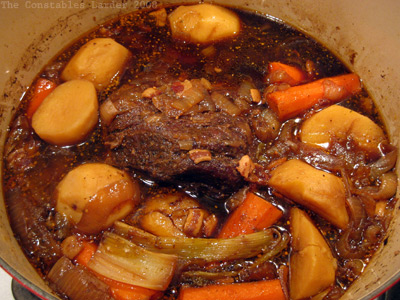
As noted, my pot was booted from the oven but I kept it warm at the lowest setting on our gas stovetop. I removed the roast, carved it across the grain (top picture), and served on a bed of egg noodles with the potatoes and carrots, generously spooning the fabulous liquid from the pot on top.
